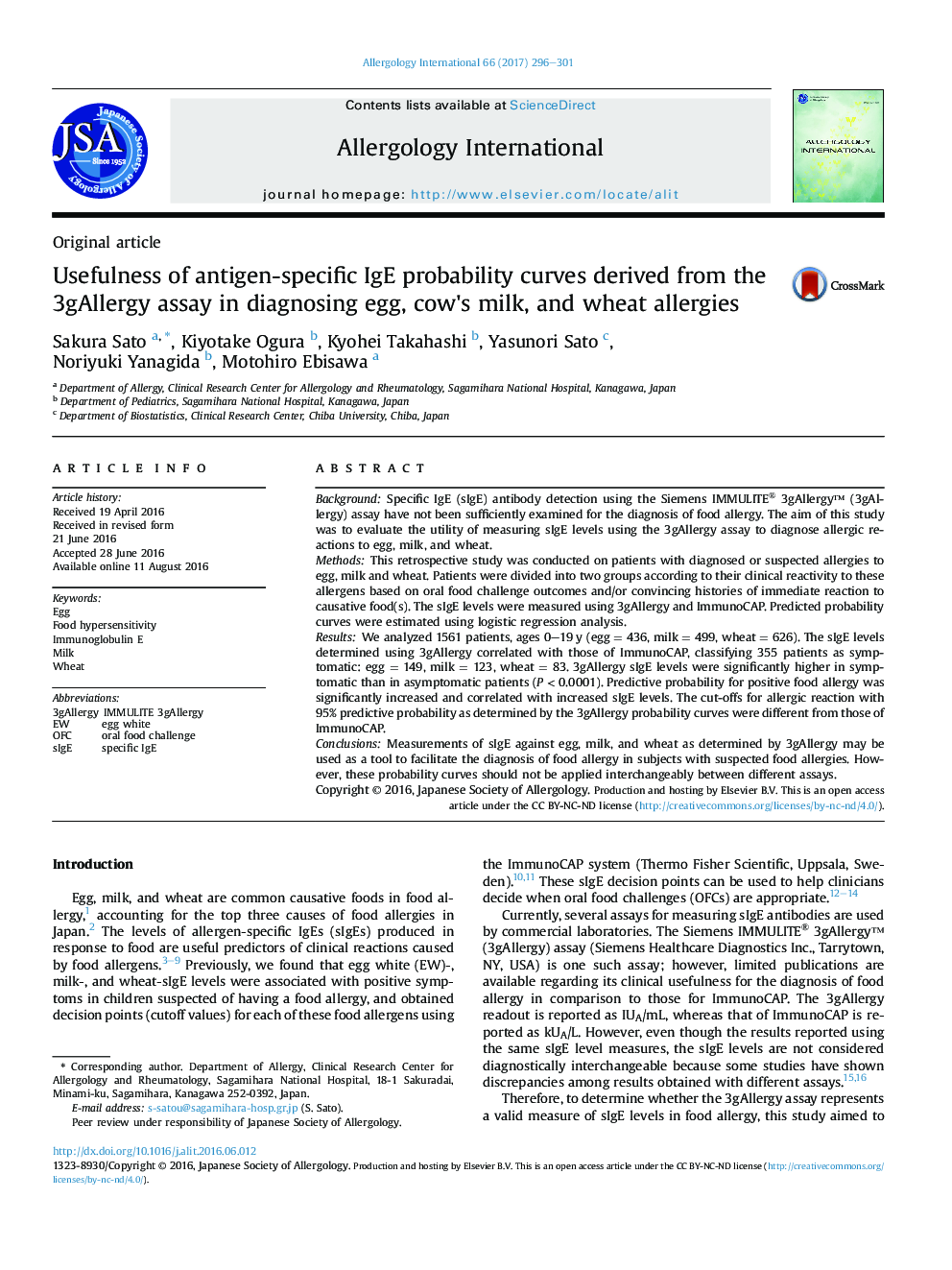| Article ID | Journal | Published Year | Pages | File Type |
|---|---|---|---|---|
| 5665204 | Allergology International | 2017 | 6 Pages |
BackgroundSpecific IgE (sIgE) antibody detection using the Siemens IMMULITE® 3gAllergy⢠(3gAllergy) assay have not been sufficiently examined for the diagnosis of food allergy. The aim of this study was to evaluate the utility of measuring sIgE levels using the 3gAllergy assay to diagnose allergic reactions to egg, milk, and wheat.MethodsThis retrospective study was conducted on patients with diagnosed or suspected allergies to egg, milk and wheat. Patients were divided into two groups according to their clinical reactivity to these allergens based on oral food challenge outcomes and/or convincing histories of immediate reaction to causative food(s). The sIgE levels were measured using 3gAllergy and ImmunoCAP. Predicted probability curves were estimated using logistic regression analysis.ResultsWe analyzed 1561 patients, ages 0-19 y (egg = 436, milk = 499, wheat = 626). The sIgE levels determined using 3gAllergy correlated with those of ImmunoCAP, classifying 355 patients as symptomatic: egg = 149, milk = 123, wheat = 83. 3gAllergy sIgE levels were significantly higher in symptomatic than in asymptomatic patients (P < 0.0001). Predictive probability for positive food allergy was significantly increased and correlated with increased sIgE levels. The cut-offs for allergic reaction with 95% predictive probability as determined by the 3gAllergy probability curves were different from those of ImmunoCAP.ConclusionsMeasurements of sIgE against egg, milk, and wheat as determined by 3gAllergy may be used as a tool to facilitate the diagnosis of food allergy in subjects with suspected food allergies. However, these probability curves should not be applied interchangeably between different assays.
